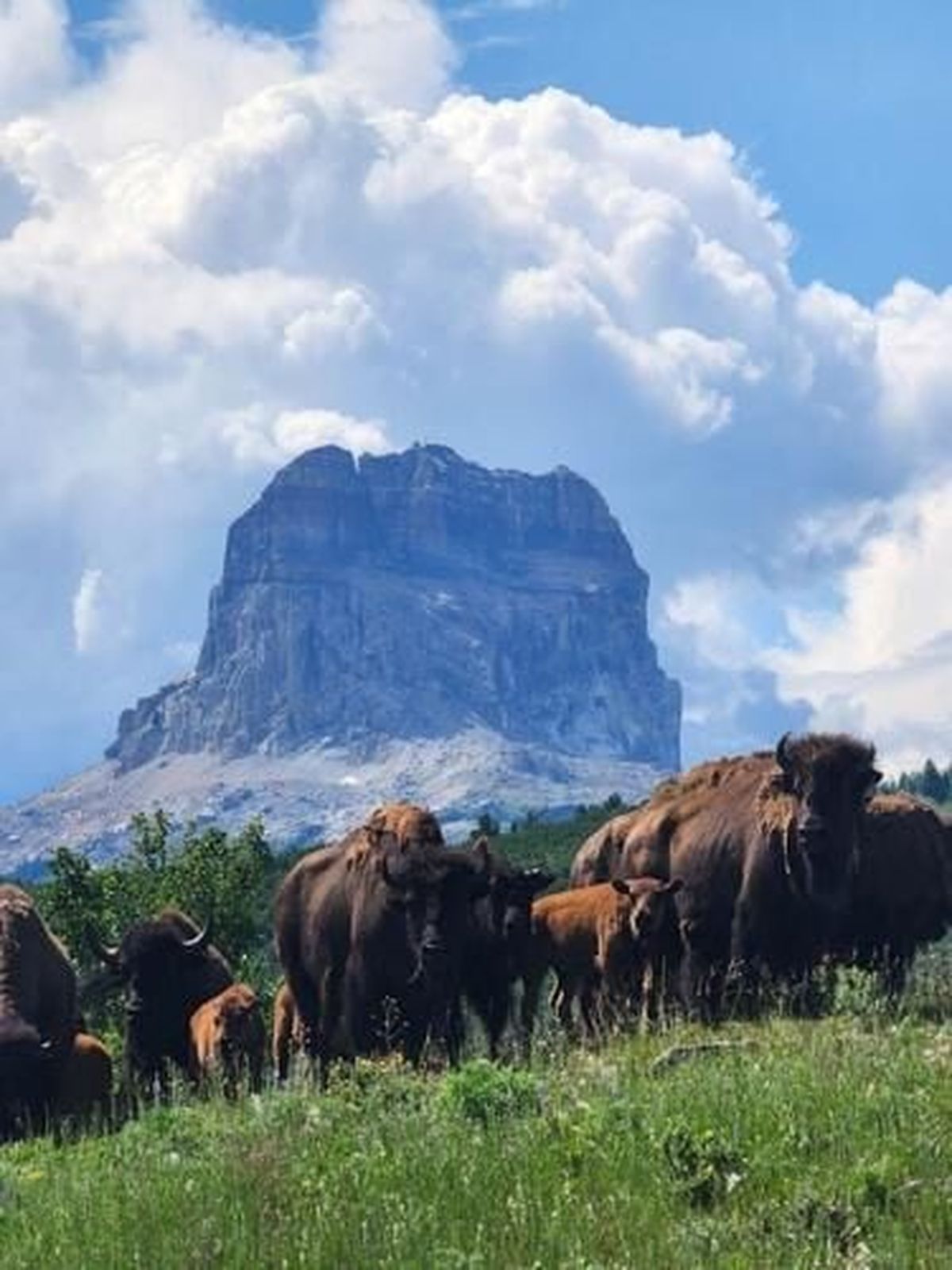‘Absolutely epic’: Blackfeet release wild buffalo on tribal land

As he watched the half-ton buffalo jump in the waist-high grass at Chief Mountain, Blackfeet Councilman Lauren Monroe Jr. said he thought of his ancestors.
“I thought of the demise they went through,” he said.
“If they were to understand that our language, our culture, our buffalo would come back one day … it was absolutely momentous as a Blackfeet to be on our land within our sovereignty and do this. We’re the leaders. We’re choosing our future as we see it.”
On Monday, the Blackfeet Nation transferred 20 wild buffalo (iinnii in the Blackfoot language) to tribal lands near Chief Mountain, an area steeped in Blackfeet cultural significance in the northwest corner of the reservation bordering Glacier National Park.
The buffalo were brought to the Blackfeet from Alberta in 2016 after testing negative for diseases. In the seven years since, the tribe has been growing the captive herd in preparation for the release.
Since time immemorial, Native Americans used buffalo for food, shelter, tools, clothing, jewelry and ceremony. Buffalo and Native people were so connected that biologists say the two mammals co-evolved.
But in the 19th century, settlers and U.S. soldiers killed millions of bison to devastate the tribal communities that relied on them. Ungulate diseases spread by domestic cattle are suspected for killing herds the hunters didn’t reach.
From 1820 to 1880, the bison population fell from around 30 to 60 million to fewer than 1,000. Some estimate that only 300 bison survived what’s known as “the Great Slaughter.”
Monroe compared the attempted buffalo extermination to colonization and assimilation efforts.
“When colonizers attempted to exterminate us, we lost our wildlife, our land and we temporarily lost access to who we were,” he said. “Like the buffalo, the Indian was the same way.
“We were cleared from the plains to make way for ‘progress,’ as they called it.”
As the bison population declined, some states and the federal government passed laws to protect the animals. By the late 19th century, hundreds of bison occupied Yellowstone National Park.
Today, through partnerships with national parks, and organizations, buffalo have returned to tribal lands nationwide. Most tribes in Montana maintain their own herds, but until earlier this week, none had released wild buffalo on their land.
‘We are not fearful anymore’
Blackfeet’s domestic herd has grown to 700 head, and the buffalo still take care of the community, just as they once did hundreds of years ago.
The Blackfeet Buffalo Program harvests about 20 buffalo each year and distributes meat to food banks, ceremonies and elders in the community.
The tribe also regularly sells its own buffalo meat at Glacier Family Foods grocery store in Browning at $7.99 a pound, so community members can afford it.
In February, the Blackfeet Nation offered its first trophy buffalo hunt, where members of the public could enter a lottery to participate in a hunt on the reservation.
The trophy hunt earned the Buffalo Program at least $75,000, which will be reinvested into food distribution efforts to benefit the community.
Monroe said he expects the free-roaming herd will also bring tourism dollars to the reservation, especially in the summer as millions travel to the nearby Glacier National Park.
He said some tourists showed up at the release by coincidence and were “absolutely floored” by the event.
Given the history of colonization and the near extermination of buffalo, Monroe said the release of the wild herd symbolizes an important shift.
“We are not fearful anymore to be Blackfeet,” he said. “We don’t need to ask permission to be Blackfeet. This means a lot. It means we are going to do what we need to do to survive.”